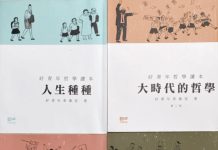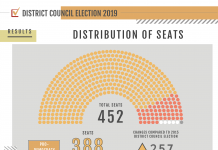How localism evolved from a movement to preserve Hong Kong’s heritage and rediscover its relationship to the land
by Minnie Wong & Howard Yang
On a December night in 2006, a slight woman wearing a thick woollen jacket stands on a step ladder and addresses a crowd gathered at a candlelit vigil at the site of the old Star Ferry terminal in Central. She rebukes the government for demolishing the pier without consulting the public and, at one point in her speech, the crowd becomes solemn as some intone the “dong, dong, dong, dong” sound of the bell from the once iconic clock tower.
The last ferry had sailed from the pier less than a month before and some hours later, police would arrest 13 protesters who tried to retake the terminal building.
Ho Loy, a cultural worker who is now 50, led the campaign to save the historic pier which marked the beginning of a wave of local consciousness (本土意識) that informed a series of social movements, most notably the campaigns to save Queen’s Pier, Wan Chai’s Lee Tung Street and the anti Guangzhou-Hong Kong high-speed rail movement.
Although localism seems to be a new phenomenon in Hong Kong, localist currents are not new. Professor Law Wing-sang of Lingnan University traces its first wave to the early 1970s, as a conceptual term expressing the affection for Hong Kong culture and values by those born and raised in the city.
Law says the second wave arose during the transitional years, when Hong Kong’s future handover to Chinese sovereignty was being discussed and a “sense of crisis” emerged as Hong Kong people sought to protect their economic and political systems and way of life.
The third wave of localism started after the handover with the social movements, led for the most part by the so-called post-’80s generation activists, sounding its arrival. The localism espoused by these activists focused on the need to preserve Hong Kong’s heritage, to acknowledge the real historical experience of all Hongkongers, especially the grassroots and to protect its culture and values. In that sense, it promoted the sense of a unique Hong Kong identity. The localism of that time also questioned the central narrative of Hong Kong as an economic city, driven by development and commerce.
It is only in more recent years that it has become characterised by a more political sense of segregation between Hong Kong and China, leading to the rise of localist groups calling for Hong Kong independence and national self-determination.
Some say the protests against the Guangzhou-Hong Kong high-speed railway in 2010 was the turning point, while others think it was Beijing’s rejection on August 31, 2014 of a free and open nomination process for election of the Chief Executive by universal suffrage.
After the demolition of the Central Star Ferry terminus, Ho Loy and the other activists formed a group called Local Action (本土行動) which played a key role in the campaign to save the nearby Queen’s Pier in 2007. The members were mostly cultural workers, artists, academics and activists, and counted Eddie Chu Hoi-dick among them. The activists took a creative but peaceful approach to protesting, staging cultural performances, sit-ins and occupations and going on hunger-strike.
Ho recalls it was a time full of possibilities. “We called it [the group] Local Action because we couldn’t think of a framework,” says Ho.
Although Ho says the organisation was rather loose and unfocused, she thinks it was also more diverse and open-minded compared with the localism of today.
“People possess a narrower imagination towards it now, they are less open to possibilities.” She finds it hard to engage with the concept of localism that emphasises nationalism and independence.
“I prefer the idea of self-determination, which refers to my value, an inner value,” she says.
Lingnan University’s Law Wing-sang says the massive July 1 protest of 2003, the Star Ferry and Queen’s Pier campaigns and the anti high-speed rail movement are significant incidents in which localism was a reponse to Hong Kong people’s sense of insecurity.
Law thinks the escalation in Hong Kong-Mainland conflicts since 2011 – such as the competition for maternity ward beds and infant milk powder and the Dolce & Gabbana incident where a store prevented locals from taking pictures but allowed mainland tourists to do so – gave rise to a new conception of localism. He says this version is very political, with a stronger idea of nationalism and the pursuit of independence. Its supporters demand a fundamental change in the political system and different methods to achieve that goal.
“They evaluate the previous ideologies of localism as immature… They worked to no avail,” Law says.
He explains that current mainstream localist thought is a strong rebound from the previous expression of localism. And he attributes the backlash to a conflict in values and ideology. The earlier proponents of localism or local consciousness did not want to touch on ethnic issues and embraced universal values. In contrast, people now say localism is about segregation both from the Mainland and Mainlanders and they will use violent and even illegal means to resist power.
“[The conflict] creates the split of right-wingers and left-wingers,” says Law.










































